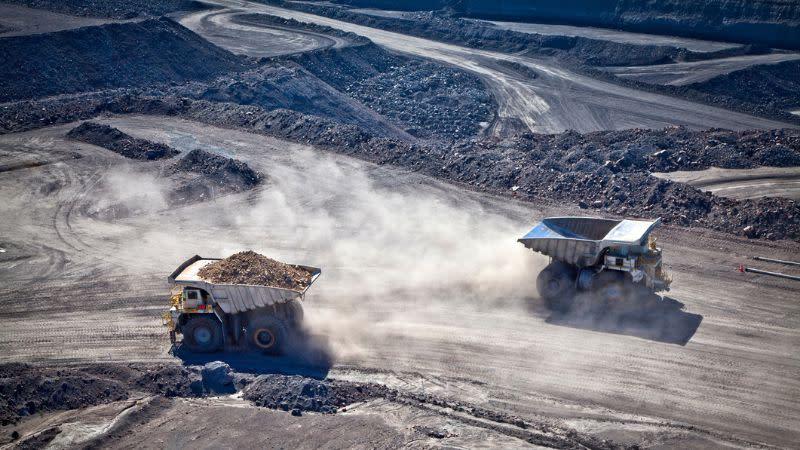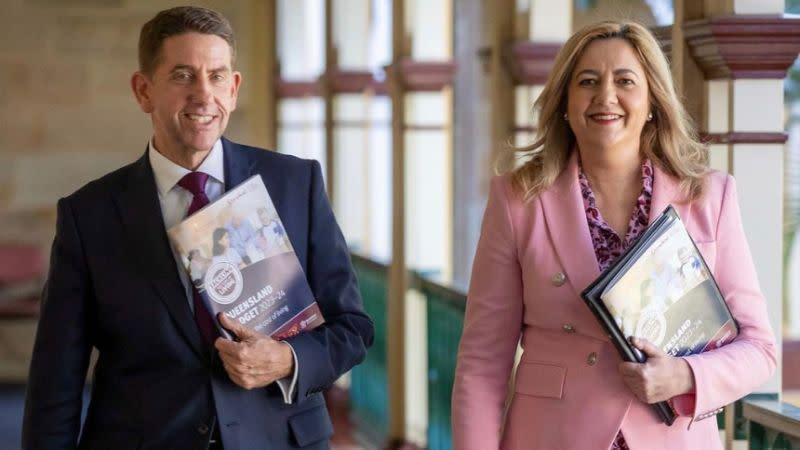As far as putting shovels in the ground, no other Queensland budget has dug deeper.
“This budget commits our government to the biggest building program in our state’s history,” declared state Treasurer Cameron Dick as he delivered the 2023-24 Queensland budget.
“Our government will deliver more hospitals, more houses, more roads, more trains and more schools.”
Overall, it adds up to an $89-billion four-year capital program it is dubbing the Big Build—including $20.32 billion of additional investment in its latest budget allocation.
And although cost-of-living relief is the budget’s centrepiece—with a slew of initiatives to help combat the impact of rising interest rates and inflation on households—the record building program is deemed the foundation the state will need to cater for future growth.
With a pile of chips in front of it from a $15.3-billion windfall in coal royalties, the government has gone all in with what it is touting will be Queensland’s biggest decade of infrastructure investment.
Meanwhile, times are as tough as they get in the development and construction sector with prevailing cost escalation and a crippling skilled labour shortage.
“Anyone who pretends governments are immune from the rapid rise in construction costs that has affected the entire industry in Australia is economically naive or seeks to deceive Queenslanders,” Dick said.
Using the coal royalties that have pumped up the state’s coffers, the government plans not only to meet those extra construction costs but also deliver a $12.3-billion budget surplus—the largest recorded by any state or territory government.
“This is the decade of Queensland’s Big Build, which is set to deliver big results for all Queenslanders,” Queensland Premier Annastacia Palaszczuk said.
“Our capital program is putting in place the infrastructure we need, where we need it, to support that growth, right across the state.
“Queensland’s biggest decade of infrastructure investment is set to transform the state creating more jobs, new industries, better communities and stronger regions.”
No complaints about that from Scott Hutchinson, the chairman of Australia’s largest private construction company Brisbane-based Hutchinson Builders.
“Things that have to get built will get built,” he said. “We’ve got the Olympics and we’ve got to get this stuff done … and they will get it done.
“They’re not trying to pump prime the industry. They understand the industry and they’re working with it.
“Prices have already gone up 20 per cent or 30 per cent and are still rising 1 per cent one or 2 per cent a month … so the private work is just going to fall off anyway because construction is too expensive at the moment and nothing stacks up.”
The budget’s big spend on building is primarily focused on transport, education, energy and housing—with a particular emphasis on the latter, given the worsening supply and affordability issues.
According to RPM’s latest south-east Queensland market update, the state’s residential vacancy rate remains acute at under 1 per cent and has a shortfall of 25,000 rental properties that is forecast to worsen as overseas migration increases.
“Understandably, this housing shortage is an issue of great concern to many Queenslanders,” Dick said in his budget speech.
As part of its budget initiatives, the government has doubled its Housing Investment Fund to $2 billion, with a target to support commencements of 5600 social and affordable homes by 30 June 2027.
An additional $322 million has been allocated to increase its social housing target by fast-tracking another 500 homes and introduced built-to-rent tax concessions for developments that provide at least 10 per cent affordable dwellings at discounted rents.
But it is not enough, according to Real Estate Institute of Queensland chief executive Antonia Mercorella.
She said while the budget will temper escalating cost-of-living demands with some much-needed support “the elephant in the room remains around how Queensland will adequately boost its housing supply”.
“Sadly, there are no incentives to meaningfully boost supply and increase the current rate of build, while we face a continued shortfall and a 50,000-waitlist growing longer by the day.”
From a developer’s perspective, Mercorella said, this year’s budget also has missed a valuable opportunity to reform stamp duty and land tax.
“Stamp duty significantly hinders home ownership, discourages housing turnover, and restricts mobility, and it’s abolishment would open doors in Queensland for many,” she said.
“The windfall from coal royalties gave the government the opportunity to scrap stamp duty and move to a long-term, broad-based land tax.
“Taxes from property have doubled over the last decade, hitting property investors who provide the vast majority of housing for Queenslanders who rent their homes.”
The budget’s big ticket infrastructure items include $19 million over the next four years to support the Queensland Energy and Jobs Plan, including new wind, solar, storage and transmission.
About $9.8 billion is being invested over six years to build new or expanded hospitals across the state including in Cairns, Townsville, Mackay, Bundaberg, Hervey Bay, Toowoomba and in south-east Queensland.
The budgeted $6.9 billion to be invested in transport infrastructure next financial year includes $420 million for stage one of the Coomera Connector, $260 million towards stage three of Gold Coast light rail as well as major upgrades to the M1 and the Bruce Highway.
With planning for the 2032 Brisbane Olympics under way, the budget also provides $1.9 billion over the next four years to commence delivery of venue infrastructure.
More than $1.2 billion has been set aside for skills and training initiatives supporting workforce development.
As well, $968 million is to be invested over 10 years to establish a rolling land fund for the strategic acquisition of new school sites for existing Queensland State schools. In the budget $358 million is allocated for new general and specialist learning spaces.
Of the $20.32 billion capital program in the 2023-24 budget, $13.3 billion, or 65.5 per cent, will be invested in infrastructure projects outside the Greater Brisbane region.
“One of the cornerstones of this budget is the revenue generated by the coal owned by the people of Queensland,” Dick said. That revenue was generated in regional Queensland. So it is only right that regional Queensland stands to benefit from what that revenue provides.
“Much of that investment will deliver the generational transformation that is the Queensland Energy and Jobs Plan,” Dick said. “That is a plan that will revolutionise Queensland economy and it will do so in regional Queensland.”
You are currently experiencing The Urban Developer Plus (TUD+), our premium membership for property professionals. Click here to learn more.




